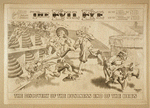"Ansel Adams once said that the principal attribute required of a good photographer is knowing where to stand. But he and Brynn know that, even standing in the perfect place, the photographer must, in a split second, capture that special moment while also noting a multitude of issues, including light, shadow, composition, shutter speed and focus.
Brynn's photographs are illustrative of her mastery over these complexities. Look, for instance, at her exquisitely eloquent composition Still Waiting. In this image, where the sun is just beginning to push away the night, workers wait in the cold early morning darkness to be selected for that day's field work. Some have already been chosen and are lining up for the bus that will take them to work; those not selected sit huddled while trying to keep warm with coffee or stand with their hoods up and hands jammed into their pockets. The stark dualities of the moment are powerfully captured--the contrast between day and night, work and idleness, inclusion and exclusion, hope and uncertainty. Instead of a dawn ripe with possibilities, Brynn helps us recognize in this metaphorically brilliant image that, for these individuals, each new day begins with the same overwhelming anxiety."
---Michael Culver, Director and Chief Curator, Naples Museum of Art, Exhibition pamphlet for "Images of Hope: Immokalee--Looking Forward, Looking Back, Photography by Brynn Bruijn" on exhibit December 1, 2009--February 7, 2010.
Michael Culver's close reading of this Brynn Bruijn photograph suggests that the technical competence and artistry of the photographer resides in his or her sense of perspective in the physical/geographical as well as the narrative sense of the word. In this exhibition, Bruijn captures the tensions inherent in the lives of the residents of Immokalee, a town of 25,000 whose population "expand[s] to 40,000 during the agricultural season" (Mary George, President and CEO of the Community Foundation of Collier County.) With grossly inadequate housing--with respect to quantity and quality--many of Bruijn's photographs document the physical interiors of impoverishment. Indeed, about half of these families live below the poverty line.
But as Culver acknowledges, Bruijn's perspective also exposes the psychological interiors of Immokalee's citizens, whose struggles, anxieties, and desires are not so easily discerned. Currently on exhibit at the Naples Museum of Art--a mere 30 miles from Immokalee--the discordant environs of wealthy and luxurious Naples throws Bruijn's subject matter into relief. Yet her work evokes deeper thinking more so than pity and elides the simpler dichotomies that we might be inclined to ascribe to it. In this sense, Bruijn's work as a photographer also shifts our perspective as viewers, drawing us in, mandating our reflection on where we reside in relationship to the people featured in these images.
The curation of this exhibition supports this end. For example, one placard informs the visitor that 70% of all vegetables consumed between late October and May are produced in southern Florida. We begin to reflect on what we consume, whether it was touched by the photographic subjects--whether they are a part of us--are actually sustaining us. This is only the beginning of this line of thought, which takes us to an uncomfortable place in which we are prompted to acknowledge the arbitrariness of our own good fortune and (perhaps) the essential insecurity of our own position. Yet, we ultimately turn back in fascination at the subjects themselves whose anxious hope is so painstakingly rendered. "Hope" is not a simplistic term to describe this state, but one that captures what it means to be unsettled---in every sense of the word.
Subscribe to:
Post Comments (Atom)






No comments:
Post a Comment